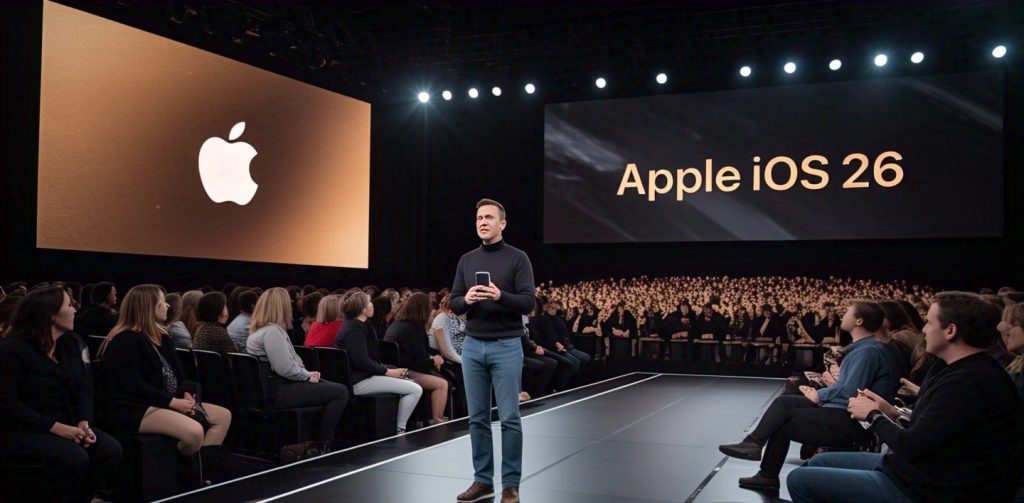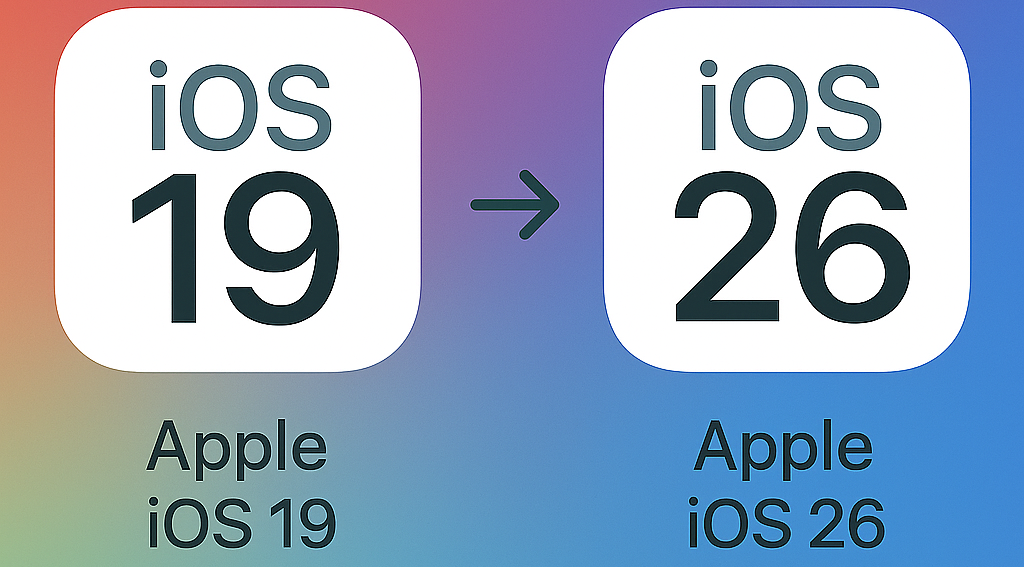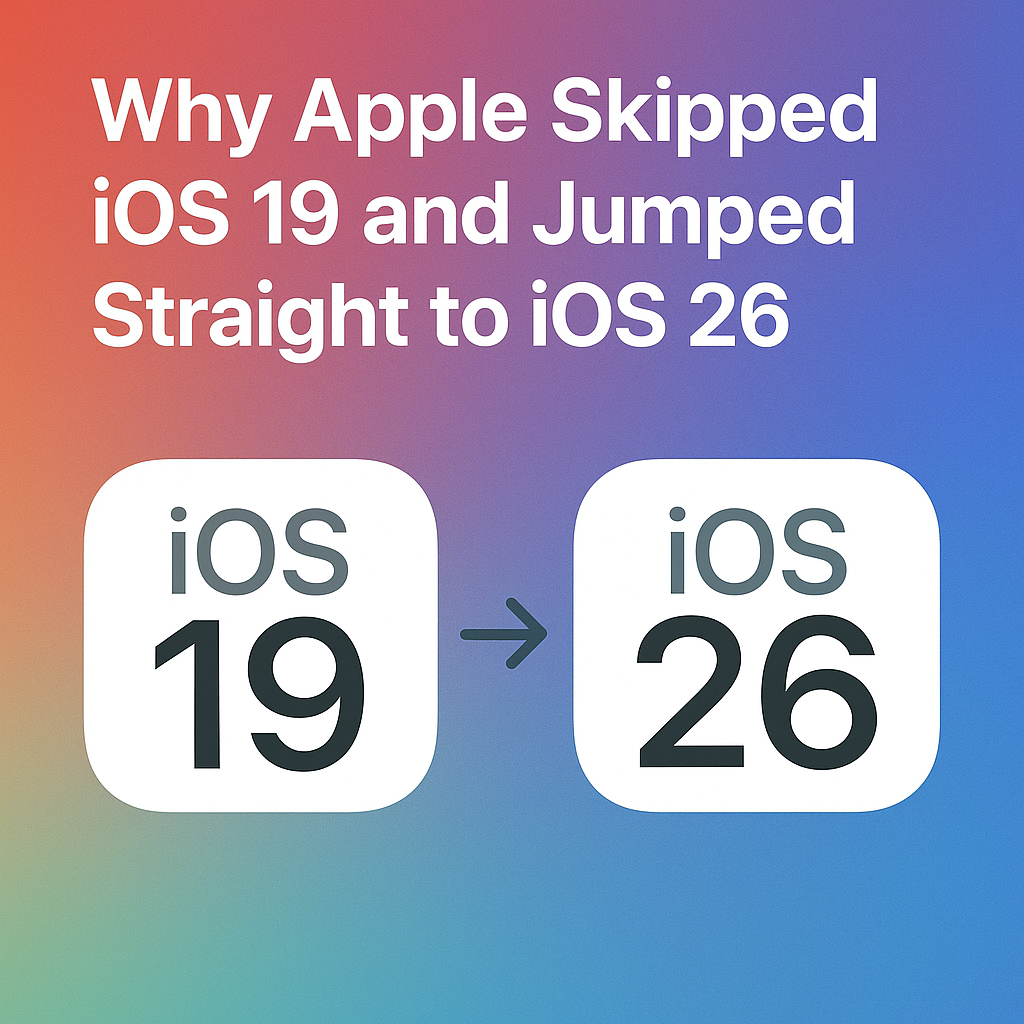In This Article
Apple iOS 19 to Apple iOS 26
You might be scratching your head: why didn’t we see iOS 19, 20, or even 25? Why go straight to iOS 26? The answer is simple. Apple decided to sync its operating systems with the calendar year, mark a clear reset in its design and AI strategy, and simplify versioning across devices. Let’s walk through why this jump makes sense—and why iOS 26 is more than just a name change.
1. Aligning Version Numbers with the Year
Apple’s new naming scheme reflects a shift to year-based versioning, similar to what Microsoft did with Windows and many car manufacturers do for model years. Though iOS 26 ships in late 2025, it’s branded for its peak usage in 2026 (igeeksblog.com).
This approach syncs iOS, iPadOS, macOS, watchOS, tvOS, and visionOS, eliminating confusion between platforms (igeeksblog.com). Now, every Apple OS shares a consistent version number tied to the calendar.
2. A Unified Ecosystem Across Devices
Previously Apple’s OS versions ran on separate numbering tracks: iPadOS 18, watchOS 12, macOS 15, visionOS 2. Jumping to iOS 26 and its siblings streamlines this. Now, developers and users alike know each OS release is part of the same major update year—no more mental math or cross-platform mismatches (t3.com, techwiser.com).
3. Launching in 2025, Used in 2026
Apple’s decision isn’t arbitrary. They expect iOS 26 to be the main version throughout 2026, even if it releases in late 2025 (igeeksblog.com). This matches industry norms like car model years and even Google’s Chrome browser versioning.

4. A Major Visual and UI Overhaul
The renaming isn’t just a branding trick. Apple iOS 26 introduces “Liquid Glass”, a translucent, layered design influenced by visionOS (mobiletrans.wondershare.com, news.com.au). Expect rounded icons, dynamic backgrounds, and clearer visual depth across all Apple devices (gizmodo.com).
5. A Clear Break From the Past
Jumping from Apple iOS 18 to Apple iOS 26 helps Apple leave behind the minor bumps of iOS 17 and 18 and positions this release as a fresh start (geeky-gadgets.com). It sets expectations: this isn’t an incremental update, it’s a new era.
6. Introducing Apple Intelligence and Core AI Features
Apple iOS 26 is packed with new intelligence tools, collectively branded as “Apple Intelligence” (news.com.au). Highlights include:
- Live translation in FaceTime, Phone, and Messages
- AI-based call screening and Hold Assist
- Image Playground and Genmoji
- Adaptive battery optimization (on-device AI) (news.com.au, en.wikipedia.org)
These features are a significant leap forward—justifying the big version number.
7. Improved Cross‑Device Consistency
With iOS 26, macOS, watchOS, and iPadOS also jump to version 26 . This keeps UI changes and new features cohesive across devices. Updates like the Liquid Glass interface will feel similar whether you’re on an iPhone, Mac, or Vision Pro headset (news.com.au).
8. Familiar Model‑Year Strategy
Apple isn’t inventing a wheel—they’re just adopting the model-year style naming common in autos and software . Think “iPhone 17” launched in 2025 but branded for 2026—iOS 26 maps the same way.
9. Device Support and Compatibility
Apple iOS 26 drops support for A12 Bionic devices (iPhone XS/XR) and earlier (en.wikipedia.org). It supports iPhone 11 and newer, tapping into the newer hardware required for AI features.
Apple Intelligence features go further, needing iPhones with A17 Pro or newer (iPhone 15 Pro and beyond) (en.wikipedia.org).

So, Was iOS 19 in Development?
No. There were no released betas of iOS 19–25. Apple intentionally skipped those numbers—this was the plan
Final Take: A Smart, Unified Strategy
Here’s how the move adds up:
- Year‑based versioning = clarity
- One design across platforms = cohesion
- Major UI and AI upgrades = substance
- Simplified updates for users and developers = less confusion
Yes, skipping eight version numbers is bold—but it’s a bold, logical branding strategy tied to a powerful update.
FAQs: Apple iOS 19 to Apple iOS 26
Q: Is iOS 26 just a rebrand of iOS 19?
No—it’s a real update with significant new AI tools, UI improvements, and versioning tied to 2026
Q: Will older iPhones get iOS 26?
Only devices with an A13 chip or newer (iPhone 11 and up) are supported. Devices with A12 (like XS/XR) are dropped .
Q: Why not name it iOS 27 if usage shifts to 2027?
Apple chose 26 because that’s when the OS will see most active use—throughout 2026
Q: Will this versioning continue?
Yes—as with Macs and Windows, Apple plans yearly OS versioning: next will be iOS 27, macOS 27, etc. .
In summary :Apple iOS 19 to Apple iOS 26
iOS 26 isn’t a quirky misstep—it’s a calculated move: calendar-year naming, visual makeover, AI power, and simpler versioning across Apple’s world. That’s why skipping to iOS 26 makes perfect sense—and why this version matters.


This Post Has 3 Comments
Pingback: iPhone RAM List: How Much Memory Does Every Model Have? - Digitallguide
Pingback: DeepSeek Faces Ban from Apple - Digitallguide
Pingback: iPhone 17 Release Date & Powerful Features! - Digitallguide